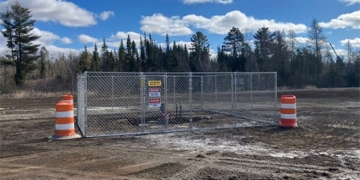Microorganisms in deceased human bodies continue to exist and play a crucial role in the nutrient recycling process of remaining substances in the dead body to nourish new life.
This is the result of a recent study led by Dr. Jennifer DeBruyn, an environmental microbiologist at the University of Tennessee (USA).

Microorganisms in dead bodies interact with soil microbial communities to decompose remains. (Illustrative image).
When a body is buried in the ground, the microorganisms within it infiltrate the soil along with a quantity of fluid from the decomposition process. These microorganisms enter a completely new environment and encounter an entirely new microbial community in the soil, combining to aid in the decomposition of the remains.
The research team indicated that the mixing of soil and decomposition fluids filled with host-related microorganisms accelerated the decomposition rate—far exceeding the decomposition rate of the soil’s microbial community alone.
The team also discovered that host-related microorganisms stimulated the nitrogen cycle. Nitrogen is an essential nutrient for life, but most nitrogen exists in a gaseous form in the atmosphere, which organisms cannot utilize. Meanwhile, decomposition plays a vital role in recycling organic forms of nitrogen, such as proteins, into inorganic forms like ammonia and nitrates that microorganisms and plants can use.
The decomposition of dead animals or remains will create biodiversity and serve as an important link in the food chain. Decomposing microorganisms convert nutrient-rich organic molecules found in deceased human bodies into smaller, more bioavailable forms that other organisms can utilize to support new life. Therefore, it is no surprise to see vigorous plant life thriving near a decaying animal carcass.




















































